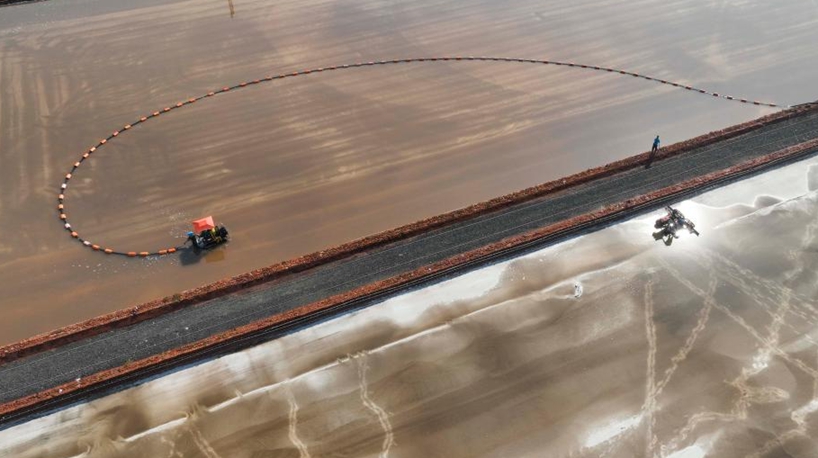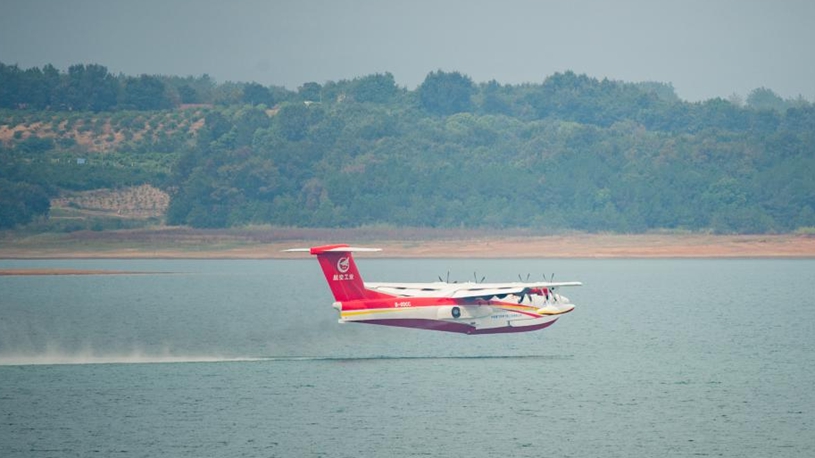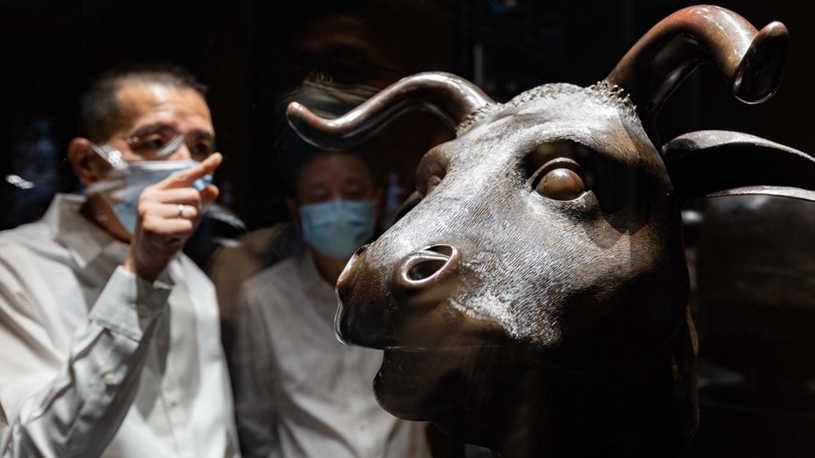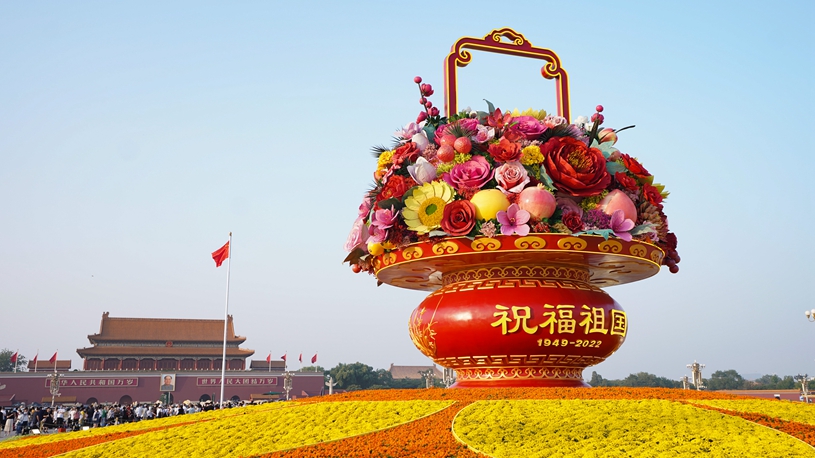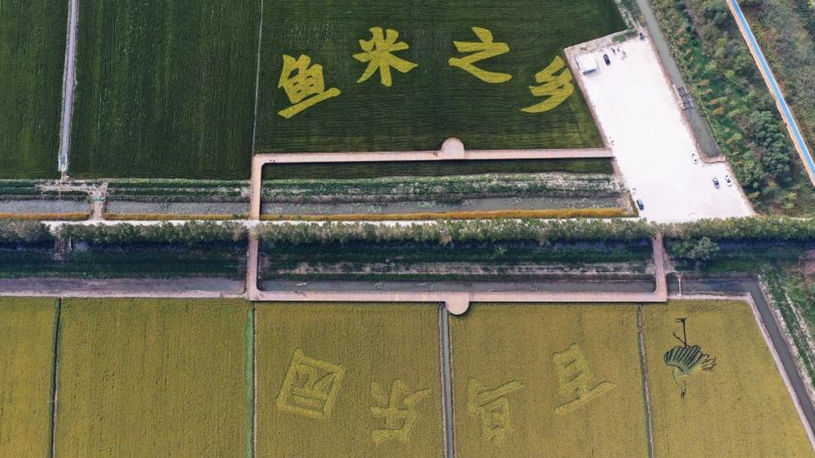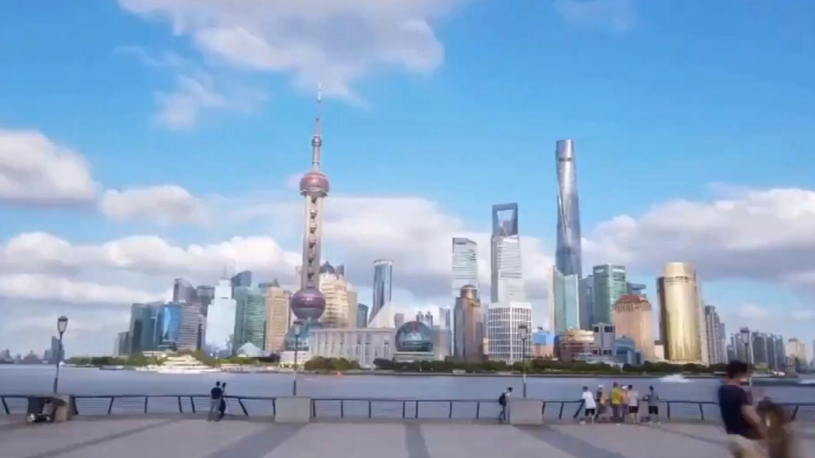
A staff member cleans a stone mural discovered in the Zhouqiao relics site in Kaifeng City, central China's Henan Province, Sept. 21, 2022. (Xinhua/Li An)
ZHENGZHOU, Sept. 28 (Xinhua) -- Excavation at a relics site in central China's Henan Province has shed light on the evolution of the ancient Chinese city Kaifeng over a period of some 1,000 years, archaeologists said Wednesday.
The excavation project at the Zhouqiao relics site in Kaifeng, which has been underway for nearly four years, has revealed layered remains and relics from different Chinese dynasties.
Archaeologists have found rich remains at the site, including bridges, waterways, embankments, temples, residences, roads, shipwrecks, etc., according to Liu Haiwang, head of the Henan provincial institute of cultural relics and archaeology.
The site's stratigraphic age spans from the Song Dynasty (960-1279) all the way to the Qing Dynasty (1644-1911), with clear layers of remains from different periods, Liu noted.
"Bridges stacked on bridges and roads piled on roads, they form a spectacle of 'layered cities' in Kaifeng," he said.
Due to wars and the Yellow River floods, Kaifeng was buried by mud and sand many times in its history. There are six ancient cities buried under Kaifeng.
"The excavation project has unveiled the mystery of 'layered cities' under Kaifeng," Liu said.
The Zhouqiao relics site got its name from Zhouqiao Bridge, built between 780 and 783 in the Tang Dynasty (618-907) across the Grand Canal, a vast waterway connecting the northern and southern parts of China. It was a landmark structure in the central axis of Kaifeng City and was buried by mud and sand in 1642 due to the flooding of the Yellow River.
Archaeological excavation of the Zhouqiao site was launched in 2018. So far, a total of 4,400 square meters of the site has been excavated, and 117 sites of remains and relics have been found.
At the site, archaeologists have discovered remains with distinct features of the old Grand Canal, huge stone murals from the Song Dynasty, a basically intact structure of the Zhouqiao Bridge from the Ming Dynasty (1368-1644), remains of temples and residences from the late Ming Dynasty as well as rut marks from the Qing Dynasty superimposed on Ming Dynasty roads.
The two stone murals from the Northern Song Dynasty (960-1127) are the largest of their kind ever found in the country.
"The stone murals are highly consistent with historical records, presenting the prosperity and magnificence of the capital city Dongjing back then," Liu said, adding that they also show the exquisite architectural and carving art of the Song Dynasty.
So far, over 60,000 pieces of various cultural relics have been unearthed at the site, including more than 56,000 porcelain pieces. They reflect the range of canal shipping and offer important information for understanding the development of the porcelain industry, north-south exchanges, and social and commercial development in ancient China, archaeological experts noted. ■

